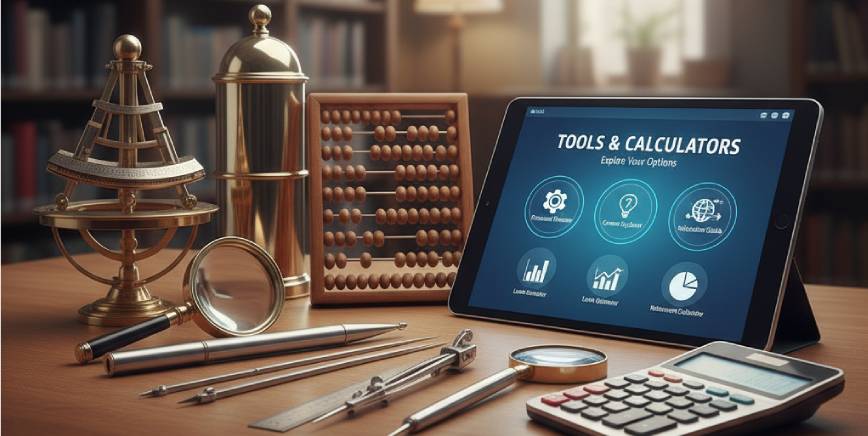Fixed vs Variable Home Loans: What Your Mortgage Broker Wants You to Know
- Home
- /
- Fixed vs Variable Home Loans: What Your Mortgage Broker Wants You to Know

- 13 Oct, 2025
Categories Home Loans
Fixed vs Variable Home Loans: What Your Mortgage Broker Wants You to Know
Key Takeaways
- Fixed home loans offer stable, predictable repayments over a set term.
- Variable home loans offer flexibility and may allow you to benefit from falling interest rates.
- Your choice should reflect your risk tolerance, cash flow needs and long-term goals.
- Brokers help you weigh the pros and cons, including split loan options.
- Market trends, lender offers and personal circumstances all influence the right choice.
- ARG Finance mortgage brokers provide expert, tailored advice on which loan structure fits your situation.
Introduction
Choosing between a fixed and variable home loan can feel overwhelming. Many Australian borrowers worry about making the wrong decision—will they lock themselves into a fixed rate only to miss out on future savings, or will they leave themselves exposed to rising repayments with a variable rate?
Without clear guidance, it’s easy to feel uncertain or anxious about which loan structure fits your financial goals, risk tolerance and lifestyle.
That’s where expert mortgage brokers come in.
In this blog, we explain what your mortgage broker wants you to know about fixed vs variable home loans, so you can make a confident, informed choice.
Table of Contents
- Understanding Fixed and Variable Home Loans
- Benefits and Drawbacks of Fixed Home Loans
- Benefits and Drawbacks of Variable Home Loans
- What About Split Loans?
- Step-by-Step: How Brokers Help You Decide
- Tools & Calculators to Explore Your Options
- Current Market Trends and Insights
- Conclusion
- FAQs
Understanding Fixed and Variable Home Loans

A fixed-rate home loan locks in your interest rate for a set period, usually 1–5 years. This means your repayments stay the same during that time, providing certainty and protection from rate rises.
On the other hand, a variable-rate home loan has an interest rate that moves up or down based on changes in the lender’s rates or the Reserve Bank of Australia (RBA) cash rate. This offers more flexibility and sometimes extra features (like offset accounts or unlimited repayments), but your repayments can increase if rates rise. Many borrowers also consider a split loan, combining fixed and variable components.
Benefits and Drawbacks of Fixed Home Loans
Benefits:
- Repayment certainty → Your repayments won’t change, helping you budget confidently.
- Protection against rising rates → If market rates increase, you stay shielded during your fixed period.
- Potential discounts → Lenders sometimes offer discounted fixed rates to attract borrowers.
Drawbacks:
- Limited flexibility → Extra repayments may be capped, and you may face break fees if you exit early.
- No benefit if rates fall → You miss out on savings if variable rates drop below your fixed rate.
- Reset risk → When the fixed term ends, you revert to the lender’s variable rate, which may be higher.
Benefits and Drawbacks of Variable Home Loans
Benefits:
- Flexibility → Make unlimited extra repayments or access redraw facilities (depending on the lender).
- Offset accounts → Reduce the interest charged by linking a savings account to your loan.
- Potential to benefit from falling rates → If market rates drop, so may your repayments.
Drawbacks:
- Repayment uncertainty → If rates rise, your repayments will increase.
- Budgeting challenges → It can be harder to plan long-term expenses with fluctuating repayments.
- Higher rates at times → Variable loans can sometimes be priced higher than the lender’s fixed offers.
What About Split Loans?
A split loan lets you divide your mortgage into two portions:
- One part with a fixed rate (for certainty).
- One part with a variable rate (for flexibility).
This balances stability and flexibility, letting you manage risk while still making the most of potential savings or features.
Step-by-Step: How Brokers Help You Decide

For most borrowers, choosing between a fixed or variable home loan isn’t just comparing rates; it’s about overcoming confusion, uncertainty and fear of making the wrong financial decision.
- Many customers feel overwhelmed by questions like:
- What if I lock in a fixed rate and rates drop?
- What if I stay variable and rates jump overnight?
- How do I even compare the dozens of loan products out there?
- Will I regret my choice in a few years?
A mortgage broker’s job is to help cut through that stress and guide you confidently through decision-making. Here’s how they do it, step by step:
Clarify Your Personal Goals and Priorities
Your broker will sit down with you to understand:
- Are you focused on long-term repayment certainty or are you comfortable riding market changes?
- Is flexibility (e.g., making extra repayments or using an offset account) important to you?
- Are you planning major life changes (like starting a family or changing jobs) that could affect your repayments?
This step involves aligning the loan choice to you, not just the market.
Explain the Trade-Offs Clearly
A good broker simplifies the pros and cons of fixed, variable and split loans in plain language, with no jargon or sales pitches. They help you understand:
- How do your monthly repayments change under different interest rate scenarios?
- What flexibility would you gain or lose with each option?
- How each loan type supports (or limits) your short- and long-term financial plans?
This ensures you make a fully informed decision, not just one based on the headline rate.
Compare Products Across Multiple Lenders
Instead of looking at just one bank’s offers, brokers compare dozens of products across banks, non-bank lenders and specialist institutions. This widens your options and ensures you get the best available deal.
For example, a broker might uncover a special discounted fixed rate or a flexible variable loan with low fees that you wouldn’t easily find on your own.
Run the Numbers for You
Brokers use professional tools to model how different loan structures would play out over time. They help answer questions like:
- What would your repayments look like under various rate rise or fall scenarios?
- How much flexibility do you have to pay off your loan early or access redraw?
- What’s the total cost difference over 5 or 10 years between fixed, variable or split options?
Seeing the numbers makes the decision less emotional and more evidence-based.
Provide Ongoing Support and Advice
Your broker’s role doesn’t end when you sign your loan papers. They stay with you to:
- Review your loan when the fixed period ends or when rates shift.
- Help you refinance or restructure if your financial situation changes.
- Keep you informed about better deals in the market over time.
This ongoing guidance ensures you’re not just choosing the right loan now, but staying on the best path for years.
Tools & Calculators to Explore Your Options

Before you choose a loan structure, it’s smart to explore your numbers using free online tools:
- Loan Repayment Calculator → Compare repayments under different rates and terms.
- Borrowing Power Calculator → Understand how much you can afford to borrow.
- Budget Planner → Ensure your cash flow can handle changes in repayments.
- Offset vs Redraw Comparison Tool → Assess which features suit you best.
Access these tools here: ARG Finance Calculators & Financial Tools
Did You Know?
- According to the RBA, the cash rate has increased since 2022, leading many Australians to review fixed vs variable loan decisions. Source: RBA
- Data from MFAA shows a rising number of borrowers choosing split loans to balance risk and flexibility. Source: MFAA
- Many lenders now offer cashback deals or discounted fixed rates to attract refinancing customers, making broker advice even more valuable.
Conclusion
There’s no one-size-fits-all answer when choosing between fixed, variable or split home loans. The right choice depends on your financial goals, lifestyle and risk tolerance, and it’s a decision best made with expert advice. A qualified mortgage broker, like the team at ARG Finance, helps you understand the trade-offs, compare products, and secure a loan that matches your needs today and in the future.
FAQs
1. Is a fixed or variable loan better when interest rates are rising?
A fixed loan protects you from rising repayments, but variable loans may offer flexibility and features. The best choice depends on your risk tolerance and financial goals; your broker can help you assess the trade-offs.
2. Can I switch from a fixed to a variable loan later?
Yes, but switching during your fixed term may involve break fees. Brokers can help you review the costs and benefits of changing or restructuring your loan.
3. What is a split loan, and is it worth it?
A split loan divides your mortgage into fixed and variable portions, giving you the best of both worlds: some repayment certainty plus flexibility. It’s a popular option among borrowers who want to balance risk and opportunity.
4. How can a broker help me choose the right loan type?
Brokers assess your financial profile, compare lender offers, explain loan features and guide you through the decision-making process, ensuring you choose a structure that suits your goals.
5. Do fixed loans always have lower rates than variable loans?
Not always. Sometimes fixed loans are discounted to attract customers, while variable rates may be lower at other times. Brokers compare current offers across lenders to find you the most competitive deal.
Want tailored advice on which loan type is right for you?
Contact ARG Finance Mortgage Broking today for expert guidance and access to Australia’s top home loan and investment lenders.
Latest Posts
-

-

How Mortgage Brokers Can Save You Time and Money 13 Oct, 2025
-



































